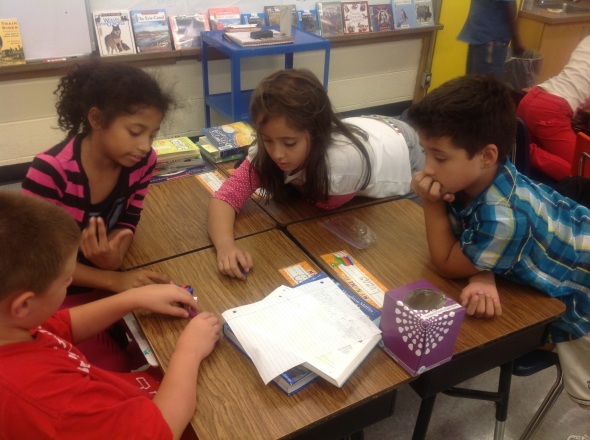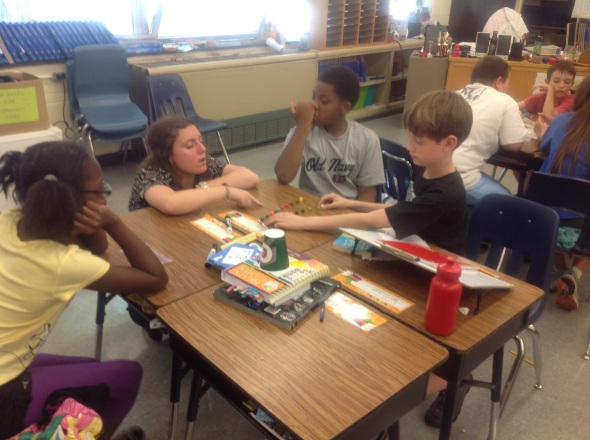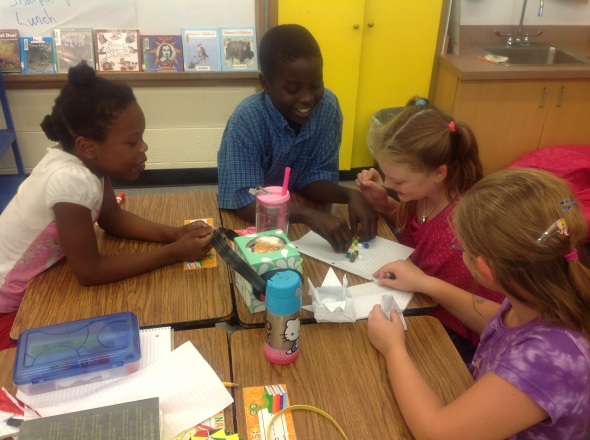Ants, Arrays, and Multiplication
We’ve started our unit on multiplication this week! We had a couple of pre-tests to see what the students already knew about multiplication. I found that most of my students know the basic multiplication facts (0-10), but very few know the standard algorithm for solving complex problems.
This is absolutely to be expected, as they have never been taught the standard algorithm for multiplication. Up through third grade, the focus of math was addition, subtraction, place value, and learning the “times tables.” A few of my students do know how to do multiplication already because a parent or older sibling or other caring adult taught them.
So we started today with exploring arrays and factors. I started by reading the story One Hundred Hungry Ants, which regular readers may remember I used with my class last year to introduce multiplication. (Then it was a week-long introduction, collaborating with a Teacher Collaborator with the University of Illinois,) After reading the story, we discussed the different arrays (arrangements of numbers in rows and columns) found in the story: 1 x 100, 2 x 50, 4 x 25, 5 x 20, 10 x 10. Then we went one step further and used the Commutative Property of Multiplication to identify the other arrays that could be used: 20 x 5, 25 x 4, 50 x 2, 100 x 1.
Then I wanted the students to practice working with different arrays in their groups (3-4 students who all sit together). My student teacher and I counted out different multi-coloured cubes and placed them in plastic bags. The numbers ranged from 12 to 40. Then the groups were tasked with coming up with as many arrays as they could. We wrapped up by recording all of the arrays on the board. Then we talked about the common factors in all of the numbers, such as 1 and 2, as well as the common factors that half of them shared (4 and 6). It was a great way to introduce arrays and basic multiplication skills. We will wrap up the introductory part of this process tomorrow and then start working on different strategies for solving more complex problems.










Leave a comment